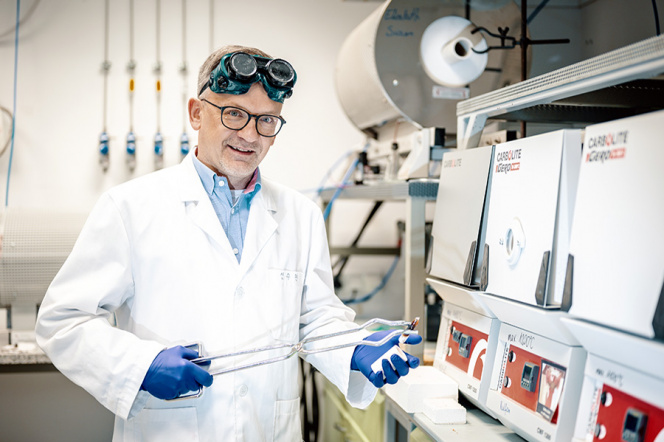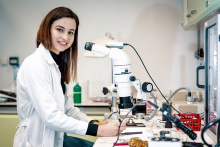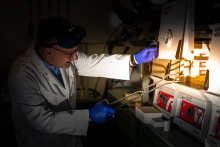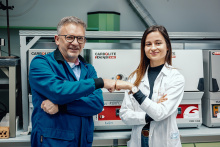Date added: 2020-11-27
New superconductors and publication in a prestigious journal

After nearly two years of interdisciplinary research, carried out as part of the NCN Opus and Harmonia grants, a Polish-American team of scientists discovered materials that show superconductivity with a low-dimensional and non-concentric structure and at a relatively high, for superconductors of this type, critical temperature (5-7K) .
– The superconductors discovered by our team exist in a new type of crystal structure that has not been previously described in the literature. So far, superconductors have been looked for in structures with high symmetry, and here we are dealing with a monoclinic and non-concentric structure. This ‘clashes’ with the predictions of the theory describing superconductivity, according to which the center of symmetry in the crystal structure must exist – explains Prof. Tomasz Klimczuk, PhD, DSc, Eng. – Moreover, with the simultaneous lack of a center of symmetry and a strong spin-orbit coupling, we can expect the existence of ‘exotic’ superconductivity. This is the case with NbIr2B2 and TaIr2B2. The critical field determined by us, i.e. the magnetic field that quenches the superconductivity, exceeds the boundary field, which is determined by the so-called Pauli limit.
As added by MSc. Karolina Górnicka, the originator of the project, author of the method of synthesis and measurement of physical properties, superconductors without a center of symmetry do exist, but there are only a few dozen of them, among the total number of several thousand superconductors.
Research carried out, among others at Gdańsk University of Technology were basic research. The article published in the Advanced Functional Materials journal indicates the need for further research, including muon spectroscopy. The first scientists interested in continuing research related to this discovery are applying.
– We have already had several requests for samples to carry out additional tests from Switzerland, Great Britain, the United States – says MSc. Karolina Górnicka.
Where could the discovery of ‘exotic’ superconductors be used in the future?
– Each new superconductor brings us closer to finding a material that will not only superconduct at temperatures close to room temperature, but can also be used in practice. All conductors carrying electric current have losses due to the fact that there is electrical resistance. In superconductors, the electrical resistance is completely immeasurable. We can say that it is equal to zero and hence the name of this class of materials. If we were to replace the electrical cables that go from the power plant to our homes with cables made of superconductors, we would recover 5 to 10 percent of the lost energy. Not only the natural environment would be pleased with such change. Our electricity bills would also be that much lower – explains prof. Klimczuk. – Moreover, superconductors are already used today in MRI (Magnetic Resonance Imaging) systems used in hospitals.
The research team was composed of: prof. Tomasz Klimczuk, MSc. Karolina Górnicka (Gdańsk University of Technology), PhD, DSc, Eng. Bartłomiej Wiendlocha, AGH professor (AGH University of Science and Technology), PhD Loi T. Nguyen, PhD Xin Gui and prof. Robert Cava (Princeton University), prof. Weiwei Xie (Rutgers University).
Scientists from Gdańsk University of Technology emphasize the importance of interdisciplinary, international cooperation of physicists, chemists and crystallographers in the context of this and other projects related to the search for new materials. The research team from GUT specializes in time-consuming specific heat measurements. The laboratory at the Nanotechnology Center receives, among others, samples from Princeton University, Rutgers University, University of Zurich.
Let us add that the research group led by prof. Klimczuk (the laureate of the Foundation for Polish Science programs) has so far discovered the phenomenon of superconductivity in 9 chemical compounds, including six superconductors as part of research conducted at Gdańsk University of Technology (the Department of strongly correlated electronic systems).
MSc. Karolina Górnicka, who previously studied compounds showing superconductivity under the Diamond Grant, is currently implementing a project financed by the Preludium program - in cooperation with prof. Robert Cava and with prof. Shintaro Ishiwata from the University of Osaka.




